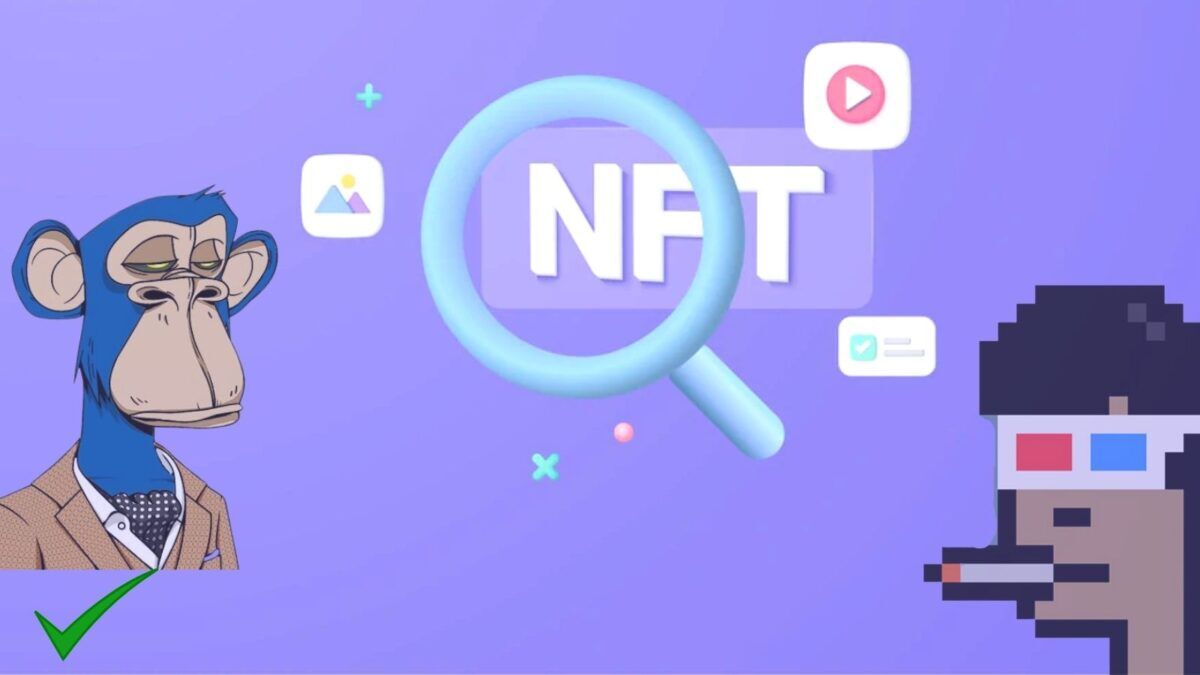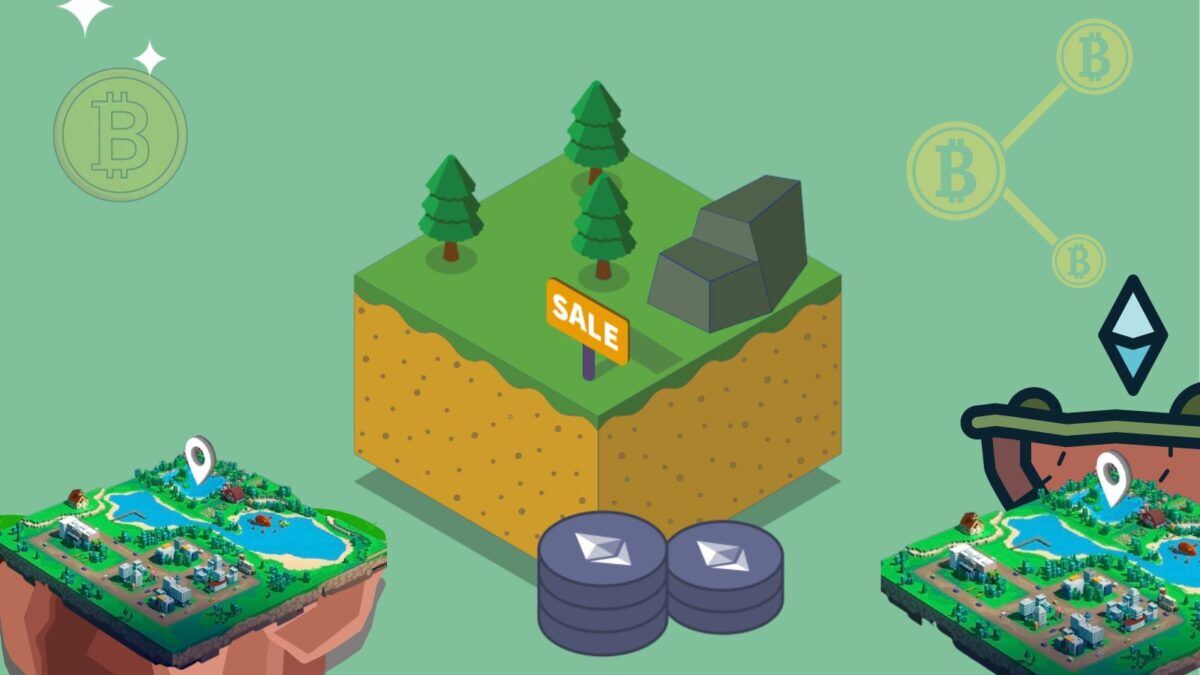With so many scams out there raising questions on the actual security of NFTs, it’s no surprise that more people are wondering how to validate the authenticity of NFTs.
Let’s find out which are the best ways to do so in the following guide:
Research the NFT owner’s social media profiles
Social media can be a great way to investigate the validity of an NFT seller. Whether you’re purchasing from a seller or a reputed NFT projects, you should perform a quick research on Twitter, Instagram, and maybe even Reddit to be sure.
A sensible owner who wants to satisfy their buyers will have a legit-looking profile. How do you tell if an NFT seller is legit through social media?
Verifying their social media will allow you to see if they are a credible artist.
The NFT owner will likely post on which NFT marketplace you can find the NFT’s information. NFT players tend to work with a specific marketplace and blockchain.
Check NFTs metadata
Another step you can take to ensure verification is checking the NFT Metadata and transaction history. Smart contracts manage NFTs and these ones store the unique ID of each NFT’s metadata, which can help you identify who’s the creator and the owner of an NFT. If the metadata isn’t available for whatever reason, you can also check the NFT’s transaction history to verify ownership. That’s the real wonder of the NFT world: NFTs minted on blockchain always have their transaction history recorded permanently.
To verify an NFT’s metadata, you can use a blockchain explorer. A blockchain explorer is an online blockchain browser that presents details of all transactions that have taken place on a blockchain network. Bitcoin has its blockchain explorer, as does Ethereum.
Etherscan.io can help you validate the NFT.
Let’s use Etherscan.io, for example. You need to locate the asset on the blockchain and inquire about the wallet address of the NFT sender. Then, go to the NFT’s metadata using Etherscan.io.
- Go Etherscan.io to introduce your NFT wallet address. Once on Etherscan’s homepage, submit your public wallet address, token or transaction hash. It will provide you with your wallet balance and token collection.
- To check NFT transaction data, select the dropdown arrow and choose the token transactions you desire to view. This will take you to a chronological list of transactions for the token type you chose to view.
- Depending on the token amount you have in your wallet, you might have to specify which of the transactions you want to choose. Pick whichever transaction you wish to view and verify.
The details it’ll provide you include: transaction hash, status, timestamp, interacting addresses, transaction fees, gas prices, gas limit, and many more.
However, what matters the most out of all this data is the status of the NFT and ensuring that the tokens are transferred. Should the status be set as successful, then that means the transaction was also performed correctly.
You’ll also have the NFT’s metadata available to you. Verify the metadata to determine the NFT’s authenticity.
Should the NFT be compliant with the current NFT standard, the “details” button will reveal the following information:
- The contact information for the NFT collection
- The blockchain hosting the NFT collection
- NFT’s metadata status, which could either be frozen or centralized.
- Finally, it will feature the NFT’s encoding standard.
How to check NFT metadata:
If you don’t know how to obtain this information, you must go to the NFT’s smart contract. It will have a section labeled as “details,” where you can verify the metadata to identify the legitimacy of the NFT.
An NFT can have a centralized or editable status, which means that the content of the NFT is stored in a location that even the NFT’s creator cannot modify. On the other hand, editable NFT information can be changed. If the NFT is frozen, you might want to keep an eye out on the creator, given how this means that it was flagged for suspicious activity and can neither be sold nor transferred.
Search for the NFT’s digital certificate
A digital certificate is like a paper certificate of a real-life collectible. When you purchase a physical collectible item, you’ll most likely receive a certificate of authenticity, the name of the manufacturer, and its serial number or equivalents.
With NFTs, the digital certificate is built on a blockchain, which prevents it from being tampered with and allows it to be tracked.
Not all NFTs have digital certificates, but many of them do. Always ask for the digital certificate to verify authenticity, and inquire about its origins if the certificate isn’t available.
You can verify if the NFT can be sold by checking their marketplace profile. It will feature if they have available seller options if you have the NFT’s identification number.
Not all legitimate NFTs come with digital certificates, and not all of them are authentic. This means that their data could be forged or become corrupted. A certificate shouldn’t be the only method you employ to verify ownership of the NFT, and a smart idea is to combine many of the methods described here.
NFT seller red flags
Here are another additional red flags to be on the lookout for in case you want to purchase an NFT:
Remember that if an NFT deal seems too good to be true, it might really be too good to be true. Check out our article on NFT scams to better learn about the many NFT scams out there.
- If the NFT has a lower price than many similar NFTs or even NFTs in the same collection, there’s a high chance it could be a fake NFT. This is when checking if the NFT seller is verified becomes essential.
- Your NFT might be as fake as an image found on Google images. Be smarter than your possible scammer by performing a reverse Google image search. The Google image reverse search is only valid when checking image NFTs, but it’s definitely better than nothing.
- If the NFT is clearly part of another collection and sold standalone without any connection to the original collection or original sellers, there’s a very high chance its a fake. Imagine, for example, an unverified seller with almost no followers on any social media channel trying to sell you a Bored Ape Yacht Club NFT for two ETH.
An unsuspecting NFT trader might see the possibility of purchasing a BAYC NFT for a price lower than normal as a one-time golden opportunity. However, this situation indeed seems too good to be true and there’s no reason why any seller who purchased a BAYC NFT for its current possible pricing be reselling it for a ludicrously low price.
Furthermore, it would be easy to verify the sales of real time NFTs on OpenSea.
Another NFT red flag is the creator selling the exact same NFT on several platforms at the same time. NFTs gain their value because they are unique pieces of art, so if someone is selling ten people the same piece, it stops being unique, doesn’t it?
An artist or NFT trader could potentially defraud you by selling an NFT on OpenSea, Rarible and Foundation at the same time with different tags. Most legitimate artists stay with one marketplace and one blockchain, though they might have different projects aimed at different target audiences on several marketplaces.
It’s always good to check the creator’s username on various marketplaces and take note if you see him selling the same NFT on more than one of them.
The future of NFT safety
Not all of these methods are foolproof, and it’s a smart idea to try many of them simultaneously to prevent your NFTs or your crypto wallet from being compromised.
We’re confident that the NFT community will soon provide more effective, completely foolproof ways to validate the authenticity of NFTs.
For example, Adobe partnered with major NFT marketplaces Rarible, OpenSea, SuperRare, and KnownOrigin to allow these options for the Content Credentials feature, allowing users to add their wallet addresses to the metadata of listed NFTs.
Twitter is also working on an NFT authenticity tool to identify the true ownership of digital artwork. This would possibly allow users to display verified NFTs as profile pictures. In the future, this will allow for easier and safer validation of the authenticity of NFTs.
Final words about validating the authenticity of an NFT
Artists have a fantastic way of making a living and a name for themselves in the digital world by selling NFTS. However, that doesn’t deter scammers and counterfeit artists from stealing your hard-earned crypto by selling you fake NFTs.
Always take steps to validate an NFT’s authenticity before and after purchasing it. The best way to do so is by checking the creator’s socials and validating their previous purchases. Use tools such as Etherscan.io to make it easier to validate after purchase.
Remember: it’s better to be safe than sorry in the NFT space!




